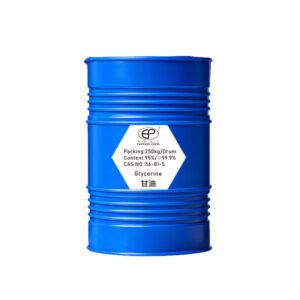In automotive care, the choice of antifreeze is pivotal for engine protection. The debate often centers around two primary ingredients: Ethylene Glycol (EG) and Propylene Glycol (PG). Antifreeze solutions utilize ethylene glycol for their exceptional heat transfer properties, enhancing cooling system efficiency. In contrast, propylene glycol is preferred for its low toxicity, providing a safer alternative in environments sensitive to chemical exposure.
This core understanding invites a deeper investigation into the multifaceted roles of these ingredients within antifreeze formulations.
Unraveling the Composition and Functionality of Antifreeze
What distinguishes ethylene glycol and propylene glycol in antifreeze solutions?
Ethylene glycol (EG) and propylene glycol (PG) are the primary components in antifreeze solutions, each offering distinct advantages and drawbacks. EG is favored for its superior heat transfer capabilities, which are essential for maintaining optimal engine temperature and preventing overheating or freezing. However, its major downside is high toxicity, posing severe health risks to humans and animals upon exposure, making it environmentally hazardous.
On the other hand, PG stands out for its lower toxicity, making it a safer alternative, especially in applications where environmental and health safety are paramount. While PG is slightly less efficient in heat transfer than EG, its non-corrosive nature and minimal environmental impact make it a preferred choice for eco-conscious users and applications requiring direct contact with sensitive systems.
The choice between EG and PG in antifreeze formulations hinges on prioritizing thermal efficiency and safety/environmental considerations. Advances in antifreeze technology aim to merge the benefits of both, striving for high-performance, safe, and environmentally friendly solutions.


How does the efficiency of ethylene glycol impact cooling system performance?
Ethylene glycol (EG) is a critical component in antifreeze solutions, significantly influencing vehicle cooling system performance. Its primary function is to regulate the engine’s temperature by lowering the coolant’s freezing point and raising its boiling point, which prevents the engine from freezing in cold conditions or overheating in hot climates. EG’s superior heat transfer capabilities ensure efficient heat absorption and dissipation from the engine, maintaining optimal operating temperatures and reducing wear on engine components. Additionally, EG-based coolants contain corrosion inhibitors that protect the cooling system’s metal parts from corrosion and scaling, further enhancing system longevity and reliability.


Why is propylene glycol considered a safer antifreeze component?
Propylene glycol (PG) is considered a safer antifreeze component than ethylene glycol (EG) due to its significantly lower toxicity to humans and animals, making accidental exposures much less harmful. Recognized by the U.S. Food and Drug Administration as generally safe for use in food and cosmetics, PG poses a reduced environmental risk as it is more readily biodegradable, minimizing its ecological impact. Despite its safer profile, PG maintains effective antifreeze properties, adequately lowering freezing points and raising boiling points of coolants, albeit with slightly less thermal conductivity than EG. Its lower corrosiveness also benefits engine and cooling system longevity, aligning with industry trends toward sustainability and safety without compromising performance. The move towards PG reflects growing consumer and regulatory demands for environmentally responsible and safer automotive chemicals.


Can antifreeze’s environmental and health safety be optimized without compromising performance?
Optimizing antifreeze for environmental and health safety without compromising its performance is achievable through advancements in chemical formulations and adopting safer alternatives. Propylene glycol (PG), recognized for its lower toxicity than traditional ethylene glycol (EG), provides a viable solution that maintains essential antifreeze properties such as effective freezing and boiling point management. Innovations extend beyond PG, including bio-based antifreeze agents and improved additive technologies that enhance safety and biodegradability. These developments ensure that antifreeze solutions protect engines across temperature extremes while reducing health risks and environmental impact. Stricter regulatory standards drive the industry towards safer, high-performing antifreeze products, demonstrating that safety and efficiency coexist in antifreeze formulations.


What advancements are emerging in antifreeze technology to enhance both safety and efficiency?
Advancements in antifreeze technology are revolutionizing engine cooling systems by enhancing both safety and efficiency. Key developments include:
- Bio-Based Antifreeze: Utilizing renewable resources like Glycerin from biodiesel production, these solutions offer reduced toxicity and environmental impact, aligning with sustainability goals.
- Advanced Additives: New additive technologies improve corrosion resistance, stability under extreme conditions, and environmental safety, extending engine life and reducing maintenance.
- Nanotechnology: Incorporating nanoparticles into antifreeze improves thermal conductivity and heat transfer, optimizing engine performance and fuel efficiency.
- Hybrid Organic Acid Technology (HOAT): Combining the benefits of organic and inorganic acid technologies, HOAT formulations offer superior corrosion protection and extended service life.
- Eco-Friendly Formulations: The shift towards formulations with lower or no toxic substances like ethylene glycol mitigates poisoning risks and environmental hazards.
These innovations ensure better protection and performance of cooling systems and contribute to sustainability and safety in automotive care.


Conclusion
The choice between ethylene glycol and propylene glycol in antifreeze doesn’t merely hinge on their freezing points. Still, it comprehensively evaluates their performance capabilities and safety profiles. By integrating the highlighted summary into our analysis, we aim to equip consumers with the knowledge to make informed decisions that align with their automotive care needs and environmental consciousness.








